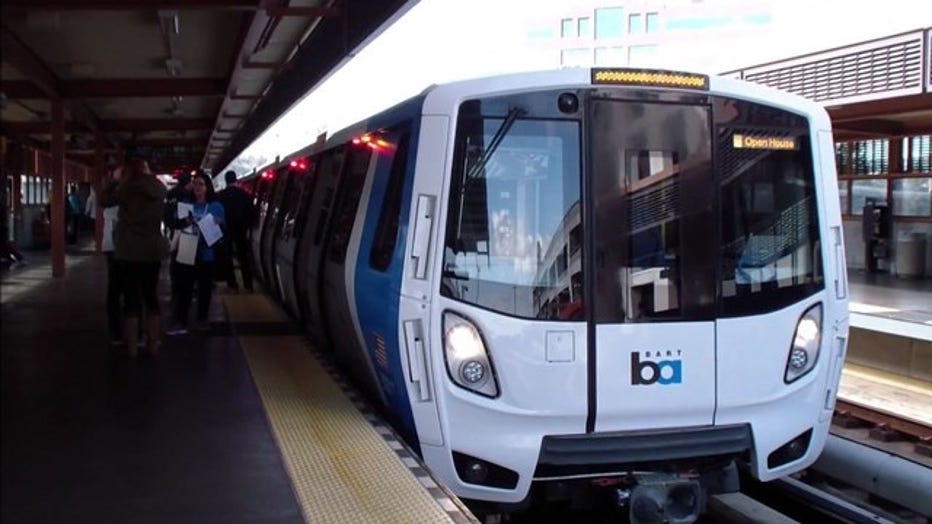New BART anti-fare evasion gates begin service at West Oakland

BART debuts anti-fare evasion gates at West Oakland station
BART's long-anticipated new fare gates are up and running at the West Oakland station. Over time they are expected to be installed at all BART stations. The goal is to put the brakes on fare invaders by making it harder for people to jump or squeeze through the gates.
OAKLAND, Calif. - The new anti-fare evader BART gates are up and running at West Oakland station. The gates debuted Thursday and are designed to deter fare evasion and to give paying riders peace of mind that they are not footing the bill for those who piggyback or jump the gate.
Pre-pandemic, BART was losing $25 million a year due to fare evaders hopping over or ducking under the gates. Though it will take four years to pay for the new fare gate system, by keeping evaders out. Many riders say it's about time.
Time-lapse footage shows the tearing down of the old West Oakland BART station fare gates and their replacement by the new, high-tech, fare-evasion resistant system. It’s the first of a $90 million systemwide Next Generation Fare Gate Project that should be completely installed and operating by the end of next year. "Each station is a little bit different So, it's not a one size fits all," said BART Infrastructure Director Sylvia Lamb.

New BART car courtesy BART
At the Thursday BART Board Meeting, staff announced the next eight stations to be refitted beginning sometime this spring. In the East Bay, the additional stations will be 24th Street, Fruitvale, Richmond and Antioch. SFO in San Francisco, as well as Civic Center, Montgomery, and Powell.
Exact dates are not yet set. "As we get closer and we figure out, you know, any kind of efficiencies, we'll publish exactly when we're gonna do that," said Lamb.
Even though the new gates are open at West Oakland to riders, the fact is that BART still has them under test.
One of the things they're going to learn: how well or how poorly potential fare evaders do when they try to skip the system. "I take BART to work every day. I see people just jump over all the time. So, you know, everybody should pay their fair share," said rider Mark Ross."
"It's a peeve to anyone who had paid money to pay for others who are stealing from the system," said rider Brenden Mendiola.
But, some fare payers don't like the new gates." If I didn't have to take BART in order to go to work, I would have protested this whole situation, because it's extremely unfair for people who simply can't afford to get to where they need to," said rider Samantha Barret.
When folks who breach the system try to leave, they will be directed to the station agent, transportation agents of BART Police. In a major emergency, the loss of power puts the gates into emergency exit mode. "The doors cannot close unless there's power. So, what that means is: if there's no power or there's an emergency, everything opens. The lock automatically disengages," said Lamb.
Until fully installed, expect delays to enter stations that are undergoing the switch over process.

